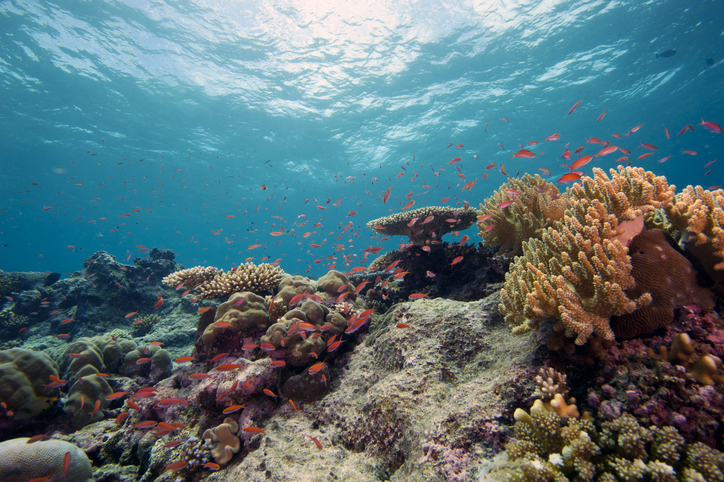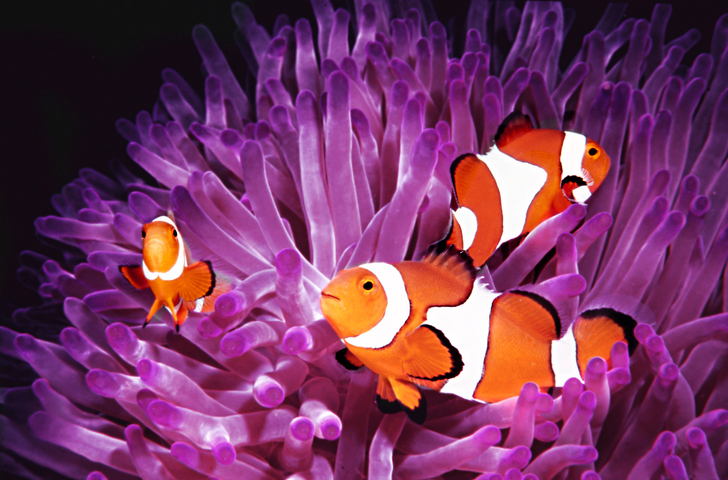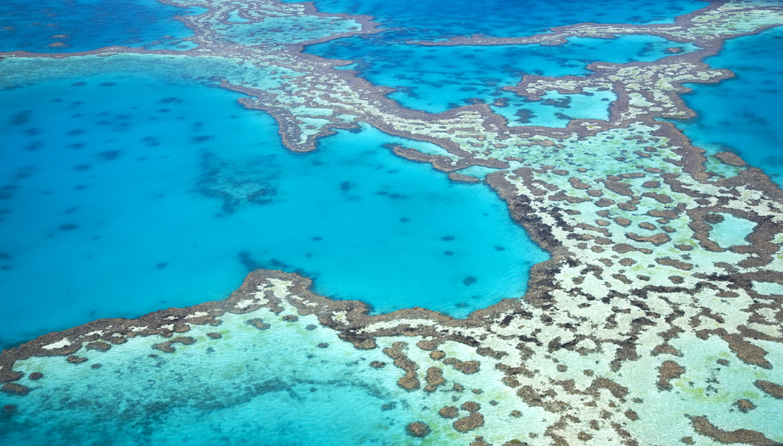It’s hard to picture the ocean without the wonderful colours and shapes of the coral reef. And, if we’re being honest, we really wouldn’t want to!
As well as adding colour and variety to the already massive number of species in our waters, they’re massively important to sea life for a few different reasons. From supporting other ocean life to improving the quality of seawater, there’s plenty of exciting information to learn about these incredible creatures.
In this guide, we’ll be answering the question of whether coral is a plant or an animal, alongside giving you some of our favourite exciting and interesting facts about these sea creatures.

Is coral a plant or an animal?
Coral is in fact an animal! Despite looking very much like a plant and being rooted to the ocean floor, they’re classed as Cnidarians and are most closely related to jellyfish and anemones. Due to their lack of spine, they can also be categorised as aquatic invertebrates.
Coral is made up of tiny polyps, which are actually individual sea creatures in their own right. Polyps are very similar in appearance to that of their jellyfish relatives and live in close proximity to one another, forming colonies which allows them to share resources and grow larger. This is how coral reefs are created. Polyps can come in all different shapes, sizes and colours which can cause confusion since they’re almost flower-like in appearance.
But since these creatures have mouths and stomachs, they’re actually more like animals than they might originally seem.
What animals live in coral reefs?
Coral reefs are home to a variety of aquatic creatures, including fish, reptiles, birds, and other mammals. Since there’s plenty of variety in coral reefs and where they tend to live, there’s an equally large biodiversity of creatures that live in and around the structures they create.
Below, we’ll split these off into categories and give you some examples of animals that live in these habitats.

Fish living in coral reefs
Some of the ocean’s most beautiful and exotic fish live in the depths of the waters amongst the coral reefs. Coral reef fish are most likely to enjoy a more tropical climate, but there are some exceptions.
Here are just some of the fish that call coral reefs home:
At Blue Planet Aquarium, we have plenty of these fish around every corner for you to meet. Head to our Discover page to learn all about our wide variety of coral reef-dwelling fish.
The reptiles contributing to coral reefs
While they’re much less common than fish or other mammals in these parts of the oceans and seas, reptiles like sea turtles and crocodiles are also known to contribute to the dynamic coral reef environment. Just think of ‘Crush’, the giant sea turtle from Finding Nemo!
Other mammals and creatures
Of course, many other exciting creatures of all sizes live and exist in coral reefs. From dolphins and octopus to oysters, clams and crabs – there’s no shortage of variety down in the depths of the waters, that’s for sure!
Facts about coral reefs
Ready to find out what some of our favourite coral reef facts are? Let’s go!
1. Corals can move
Once coral reaches the adult stage, they’re most likely attached to the ocean floor for the rest of their life. However, corals in the larval or baby stages are free to swim around. Some soft corals, such as mushroom corals, are still able to move around throughout adulthood using a foot to get around.
During reproduction, corals release sperm and eggs into the water. After fertilisation, tiny babies are formed which can swim straight away.
The babies can ride the waves and currents until they discover a new suitable place to live. Once they do, they’ll swim straight down to the bottom of the ocean, attach themselves to the floor and grow into a new coral colony.
2. Coral supports a quarter of ocean life
Coral provides a home for around 25% of the marine species we’re aware of. That’s a pretty big chunk! They provide homes for many species, alongside protecting coastal areas from erosion or natural disasters.
These creatures also have a mutually beneficial relationship with algae. Tiny algae will live in the coral’s tissues and grow on the polyps because this means that they can photosynthesise and produce food for the coral while also staying safe from predators.
Corals are also pretty important to humans since they benefit modern medicine and help support commercial fisheries.
To find out more about the importance of coral reefs, check out our blog!
3. Coral reefs are found worldwide
Coral reefs can be found in a huge variety of locations, including in the Pacific Ocean, Indian Ocean, Caribbean Sea, Red Sea, and the Persian Gulf. They tend to thrive in stronger currents and warmer climates, so this is the most likely place you’ll see them.
Since there are so many species of coral, they can often survive in many conditions. This is mostly due to the fact that they live at the very bottom of the seas and oceans where temperatures tend to be much warmer than at the surface.
4. Corals eat plankton & small fish
Coral polyps have stinging cells like jellyfish do to help them catch their food as it floats by. Plankton and some small fish can fall victim to these seemingly innocent tentacles, ending up as part of a coral reef’s diet. However, the majority of their diet consists of photosynthetic algae.
5. Coral stabilises the seabed
Sand mining can be a serious issue for many underwater creatures. Luckily, the formation of coral reefs means that the seabed can be built back up and prevent massive shifts in the land.
This helps protect the habitats of the creatures that also live at the bottom of the ocean, such as clownfish. Without a stable seabed, the biodiversity of creatures living in the reefs could be disturbed.

6. The Great Barrier Reef is the biggest coral reef in the world
You must be living under a rock if you haven’t heard about The Great Barrier Reef. Found in the Coral Sea, this massive reef has been thriving just off the north eastern coast of Australia for tens of thousands of years, at the very least.
Since it’s the biggest, it’s no surprise that this reef is home to the most coral species in the world. An estimated 400 types of coral exist here!
7. They contribute massively to local tourism
Unsurprisingly, these colourful and vibrant creatures tend to draw big crowds. Whether it’s boat trips or scuba divers, millions of people flock to the world’s coral reefs every year just to see them up close and personal. And we don’t blame them really – they are really wonderful to look at!
8. Climate change threatens corals
Although this isn’t a particularly nice fact, it’s an important one to know. Corals are under threat from climate change, and many species across the world are now on a protected list to help preserve them and prevent extinction.
They can be incredibly sensitive to any changes in the ocean’s temperatures and salinity. When they detect changes, polyps become stressed and lose their vibrant colours, which ultimately prevents them from getting energy from the sun.
This process is known as coral bleaching and can easily kill off a huge colony if they experience significant stress. Coral is also at risk from coral mining, pollution, overfishing and other local threats.
We can all do our bit to help slow the effects of climate change and protect our coral and other sea life. From advocating for environmental policy changes to smaller changes like cleaning up the beaches and always picking up your litter, anything you can do to protect the environment will help.
Here at Blue Planet Aquarium, you’ll find our coral in the Coral Cave as part of our Tropical Exhibit. Plan your visit today to discover the rest of our marine life at the aquarium!
